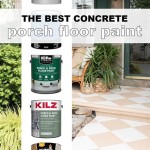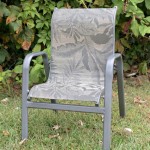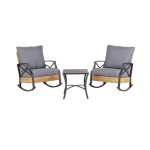What Is The Best Patio Paver Sealer?
Selecting the optimal paver sealer for a patio surface is a multifaceted decision determined by a range of factors including paver material, desired aesthetic outcome, environmental conditions, and anticipated traffic. The objective of a paver sealer is to protect the pavers from stains, weathering, and deterioration, while simultaneously enhancing their appearance. This article explores the various types of paver sealers available, the considerations involved in choosing the right one, and the application process. Understanding these elements is essential for ensuring the longevity and beauty of a paver patio.
Pavers, available in materials like concrete, brick, natural stone (flagstone, travertine, bluestone), and clay, offer aesthetic versatility and structural integrity for outdoor spaces. However, these materials are porous and susceptible to damage from moisture, oil, and other environmental contaminants. A well-chosen and properly applied sealer can mitigate these risks, preserving the pavers' original characteristics and extending their lifespan. Without adequate sealing, pavers can fade, crack, erode, and become breeding grounds for unsightly mold and mildew.
Types of Paver Sealers
Paver sealers are broadly categorized into two primary types: film-forming sealers and penetrating sealers. Each type offers distinct advantages and disadvantages, making them suitable for different applications and desired results. Understanding the characteristics of each is crucial for making an informed decision.
Film-Forming Sealers: These sealers create a protective layer on the surface of the pavers. They are typically acrylic or polyurethane based. Film-forming sealers offer enhanced protection against stains, wear, and tear, and often provide a glossy or wet-look finish, enhancing the paver's color and texture. The downside is that they can be susceptible to scratching, peeling, and blistering if not applied correctly or if the underlying surface is not properly prepared. They also change the breathability of the pavers, potentially trapping moisture underneath, leading to issues like efflorescence or even structural damage in colder climates prone to freeze-thaw cycles.
Acrylic sealers are a common choice for their ease of application and relatively low cost. They provide a decent level of protection against water and stains, but they are less durable than polyurethane options and may require more frequent reapplication. Acrylic sealers are typically water-based or solvent-based, with water-based options being more environmentally friendly and easier to clean up.
Polyurethane sealers offer superior durability and resistance to abrasion, chemicals, and UV damage compared to acrylic sealers. They are available in both water-based and solvent-based formulations, with solvent-based versions generally providing better performance but emitting higher levels of volatile organic compounds (VOCs). Polyurethane sealers can create a high-gloss finish, adding a dramatic sheen to the pavers. However, they also require meticulous surface preparation and application to avoid issues like bubbling or clouding.
Penetrating Sealers: Penetrating sealers, as the name suggests, penetrate into the pores of the pavers to provide protection from within. These sealers are typically siloxane, silane, or siliconate-based. They do not form a surface film and, therefore, do not alter the natural look of the pavers. Penetrating sealers primarily function by repelling water and preventing it from being absorbed into the paver material. This helps to prevent staining, freeze-thaw damage, and the growth of mold and mildew. While they don't provide the same level of stain resistance as film-forming sealers, they offer excellent long-term protection without altering the appearance or breathability of the pavers.
Siloxane sealers are hydrophobic, meaning they repel water. They are a good choice for pavers in areas with high moisture exposure. Silane sealers offer similar water-repelling properties but penetrate slightly deeper into the material. Silane-Siloxane blends offer a synergistic effect, combining the benefits of both chemistries for enhanced performance. Siliconate sealers are also water repellents and often contain additives to inhibit the growth of mold and mildew, making them suitable for damp or shaded areas.
Choosing between film-forming and penetrating sealers depends on the desired aesthetic and functional priorities. If a glossy finish and enhanced stain resistance are desired, a film-forming sealer might be the preferred choice. If maintaining the natural look of the pavers and prioritizing breathability and long-term protection against water damage are more important, a penetrating sealer is generally the better option.
Key Considerations for Selecting a Paver Sealer
Selecting the right paver sealer involves careful consideration of several factors. These factors include the paver material and its porosity, the climate and environmental conditions, the level of traffic the patio will endure, and the desired aesthetic. Addressing these considerations will help to narrow down the options and identify the most suitable sealer for the specific application.
Paver Material and Porosity: Different paver materials have varying degrees of porosity, which affects how well they absorb sealers. Concrete pavers are generally more porous than brick or natural stone pavers. Highly porous materials will require more sealer to achieve adequate protection. The type of paver also influences the choice of sealer chemistry. For example, certain types of natural stone, such as limestone, are particularly sensitive to acids, so acid-based sealers should be avoided. Always consult the paver manufacturer's recommendations for compatible sealers.
Climate and Environmental Conditions: The climate in which the patio is located plays a significant role in determining the appropriate sealer. In regions with harsh winters and frequent freeze-thaw cycles, it is crucial to use a sealer that allows moisture vapor to escape, preventing water from getting trapped inside the pavers and causing them to crack or spall. In areas with intense sunlight, a sealer with UV inhibitors is essential to prevent fading and discoloration of the pavers. Additionally, if the patio is located near saltwater or is exposed to chemicals, a sealer with good resistance to these substances is necessary.
Traffic and Usage: The amount of foot traffic and the type of activities that will occur on the patio will also influence the choice of sealer. High-traffic areas, such as walkways and seating areas, require a more durable sealer that can withstand abrasion and wear. If the patio will be used for outdoor cooking or dining, a sealer with good stain resistance is essential to protect against spills and splatters. For patios around swimming pools, a sealer that is resistant to chlorine and other pool chemicals is required.
Desired Aesthetic: The desired aesthetic outcome is a crucial factor in selecting a paver sealer. As mentioned previously, film-forming sealers can enhance the color and texture of pavers, providing a glossy or wet-look finish. Penetrating sealers, on the other hand, leave the pavers looking natural and unaltered. The choice depends on the homeowner's personal preference and the overall design of the outdoor space. It's important to consider how the sealer will affect the appearance of the pavers under different lighting conditions and at different times of day.
Application Process and Best Practices
Proper application is as important as choosing the right paver sealer. A poorly applied sealer can be ineffective or even damage the pavers. The application process typically involves several steps, including cleaning the pavers, preparing the surface, applying the sealer, and allowing it to cure properly. Following best practices ensures optimal results and maximizes the lifespan of the sealer.
Cleaning and Surface Preparation: Before applying any sealer, it is essential to thoroughly clean the pavers to remove dirt, debris, stains, and any existing sealers. This can be done using a pressure washer with a wide fan nozzle. For stubborn stains, such as oil or grease, a specialized cleaner may be required. After cleaning, the pavers must be allowed to dry completely before applying the sealer. Any residual moisture can prevent the sealer from bonding properly and lead to issues like blistering or clouding. It's also crucial to repair any cracks or damage to the pavers before sealing.
Application Techniques: Paver sealers can be applied using a variety of methods, including a brush, roller, or sprayer. The choice of application method depends on the type of sealer, the size of the patio, and personal preference. When using a brush or roller, apply the sealer in thin, even coats, overlapping each stroke to ensure uniform coverage. When using a sprayer, maintain a consistent distance from the pavers and use a fan nozzle to avoid over-application. Always follow the manufacturer's instructions regarding the recommended application rate and the number of coats to apply.
Curing and Drying Time: After applying the sealer, it is essential to allow it to cure and dry properly before exposing the patio to traffic or moisture. The curing time will vary depending on the type of sealer and the environmental conditions, but it typically ranges from 24 to 72 hours. During the curing process, protect the patio from rain, sprinklers, and other sources of moisture. It's also important to prevent foot traffic and vehicle traffic on the patio until the sealer is fully cured. Following the manufacturer's recommendations for curing and drying time is crucial for achieving optimal results.
Maintenance and Reapplication: Paver sealers are not permanent and will eventually need to be reapplied to maintain their effectiveness. The frequency of reapplication will depend on the type of sealer, the level of traffic, and the environmental conditions. Generally, film-forming sealers will need to be reapplied more frequently than penetrating sealers. Inspect the patio regularly for signs of wear, such as fading, staining, or peeling, and reapply the sealer as needed. Before reapplying, clean the pavers thoroughly and ensure that they are dry. Following a regular maintenance schedule will help to prolong the lifespan of the pavers and keep them looking their best.

Paving Sealers Which Sealer Should You Use On Your

Find The Best Brick Paver Sealer Top Rated Sealers For All Needs

Best Paver Sealer In 2024 Seal My Pavers Venice Fl

What Is The Best Paver Sealer For Your Patio

Patio Sealer The Best Sealers Tested For And Durability Shetland S Garden Tool Box

Summitseal Block Paving Sealer Satin Highly Durable Sand Harden Premium Paints Limited

Best Paver Sealer For Florida How To Keep Your Pavers Looking New The

Best Paver Sealers And Hardscape Coatings S Seal N Lock

Best Paver Sealer For Florida How To Keep Your Pavers Looking New The

Find The Best Brick Paver Sealer Top Rated Sealers For All Needs
Related Posts








